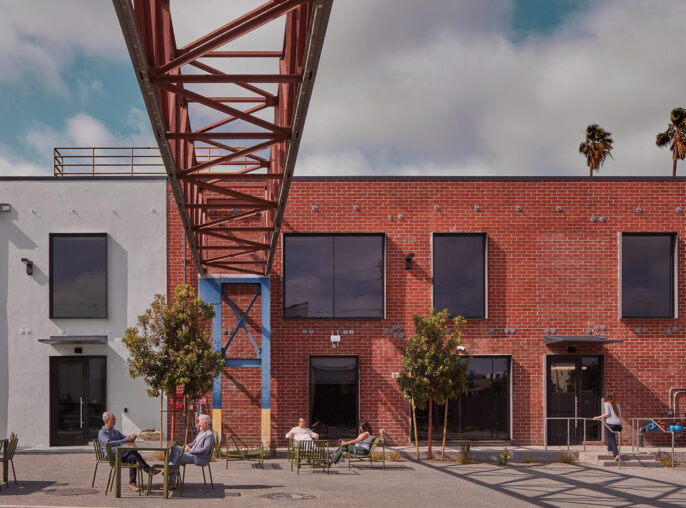Insight
10 Trends That Will Define Life Sciences Design

As the life sciences sector continues to expand and evolve, so too does the architecture and interior design that supports it. We are poised to see significant shifts in how designers approach spaces for research, development, and healthcare. These trends reflect advancements in technology, sustainability, and the human-centric design philosophies that prioritize the well-being of both patients and professionals. Here are ten trends set to define life sciences design in the years to come.

- Flexibility and Scalability
The need for spaces that can adapt to rapid changes in research focus or scale up quickly is crucial. Modular designs and reconfigurable labs and offices will dominate, allowing organizations to pivot seamlessly as project needs evolve.

- Integrated Technology
From augmented reality (AR) for virtual training to AI-driven systems for managing environmental controls, technology integration will be key. This includes smart labs that leverage data analytics to optimize conditions for experiments and research efficiency. Additionally, advancements in regenerative medicine and tissue engineering rely on cutting-edge technologies like 3D bioprinting and computational modeling, which enable precise manipulation of biological materials and accelerate the development of novel treatments.

- Enhanced Safety Features
Safety in laboratories is paramount, but we’ll see this pushed even further with the integration of advanced air filtration systems, touchless interfaces, and materials that are easier to clean and reduce the spread of contaminants.

- Biophilic Design Elements
Incorporating natural elements into life sciences facilities not only reduces stress and boosts mood but also increases productivity. Expect to see more indoor gardens, natural light access, and the use of materials that mimic natural patterns.

- Sustainability
Energy efficiency and sustainable practices will be at the forefront of life sciences design. This includes the use of recycled materials, solar energy, and designs that minimize environmental impact while maximizing building performance.

- Collaborative Spaces
Even in highly technical fields like the life sciences, collaboration fuels innovation. Designing spaces that foster interaction and teamwork, including shared labs, open office environments, and communal break areas, will be a focus.

- Acoustic Design
With open-plan layouts, managing noise levels becomes crucial. Soundproofing materials and designs that minimize disruption in focused work areas will be integral to creating effective work environments.

- Advanced Simulation Labs
Simulation labs, particularly in the medical and pharmaceutical sectors, will see significant investment. These spaces will be designed to accommodate advanced equipment and technologies that allow for detailed and realistic simulations.

- Human Centric Design
Expect a more strategic use of color within life sciences facilities to influence mood and cognitive function. Color schemes that promote calm, concentration, and alertness will be utilized in labs and communal areas alike.

- Branding through Design
As competition in the life sciences sector intensifies, companies will look to differentiate themselves through branding. This includes designing spaces that reflect brand identity and values, creating a unique and memorable environment for employees and visitors.
These emerging trends for life sciences design are driven by an understanding that the quality of the physical environment significantly impacts innovation, productivity, and well-being. As we move into the next year, these design trends will help shape facilities that are not only efficient and safe but also places where science and people thrive together. For life sciences firms looking to redesign their spaces, keeping these trends in mind will be key to creating state-of-the-art environments that meet the demands of modern science and technology.


